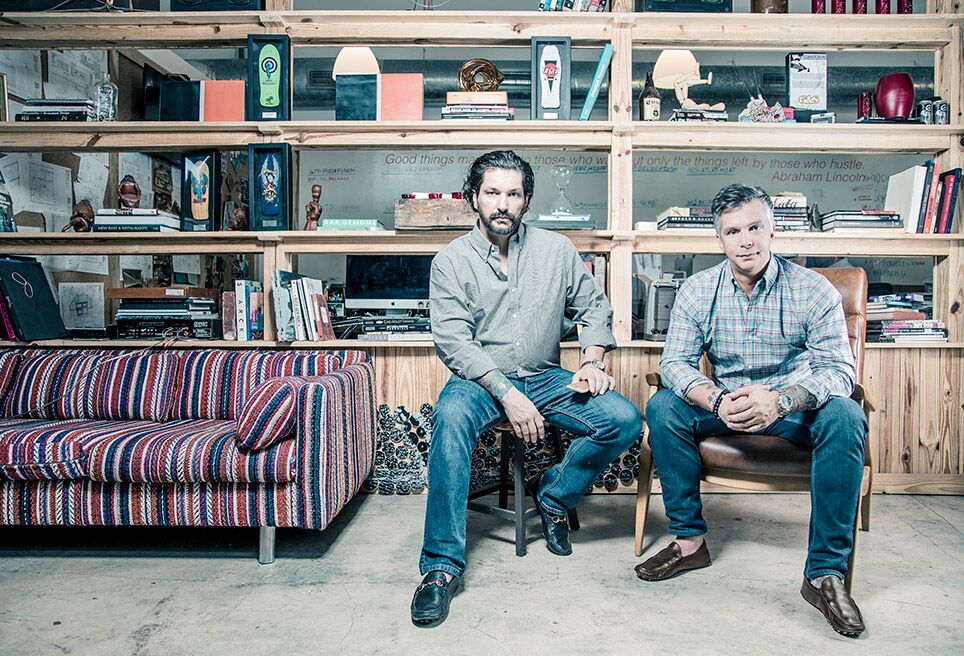Trending
Q&A with Saladino Design Studios’ Sean and Michael Saladino

They’ve designed and managed construction for lots of Miami’s hippest restaurants: Beaker & Gray, Ball & Chain and Pride & Joy BBQ, among them.
Now, the team at Saladino Design Studios is branching out and taking its expertise to Tennessee, Wisconsin, California and other states.
At the helm are Saladino brothers Sean, 42, and Michael, 40, who hail from an Italian-Irish family that long has operated restaurants. The brothers made a name in Miami with their own eateries, then set out to design spots that not only offer lots of authentic details but also are laid out in ways that make sense operationally.
The brothers talked with The Real Deal about their firm and design trends in Miami. The interview has been edited for clarity and space.
What’s the skinny on Saladino Design?
Sean: We started three years ago, but have been working together since 2008. Now, we’re 10 people. We’re not just a design and architectural firm. We’re design-build, so the subcontractors that work with us probably employ 60 to 70 additional people. We manage production from start to finish. In Florida, we’re one of the few design-build firms that does the detailed work we do, from designing millwork furniture to creating chandeliers.
Michael: Our background as operators in the hospitality industry gives us a leg up. We know how to make a room work financially.
Sean: When you think of design aesthetic, you think of New York and Los Angeles. It’s kind of rare that design from Miami is going to other states, and we’re working all over the United States, from Wisconsin to Washington to Tennessee and California.
What defines your restaurant design? I’ve noticed brick, iron and wood in Beaker & Gray and Ball & Chain, for instance.
Sean: We don’t have a specific style. It comes down to the client. There was a trend about a year ago to do vintage-industrial. We were kind of the first to market with that with Pride & Joy BBQ [in Wynwood], but it got so played out. Now, we’re going in different directions.
How do you decide what design to do?
Sean: It’s about sitting down with the client like we are with you: Spending time, talking, asking your ideas and maybe asking you to show us a couple of pictures of what you want your place to look like. We want each project to be unique. We hate buying off the shelf. And we work on layering and texturing different elements.
At Beaker & Gray, for example, we took a brick wall, added stucco detail on top, and then hand-chipped out the stucco, so it looked like the brick had been aged. For the flooring, we took wood from a barn that had been around for 150 years in North Carolina, re-surfaced it, hand-cut it, mitered it, put in the tongue-and-groove, and then, inlaid old cement tiles that we had hand-painted and hand-varnished. Then, we mirrored the ceiling above and created a custom chandelier. It’s a labor of love.
Michael: It’s very important for us that our materials and finishes are authentic.
Sean: Budgets. Clients in Miami usually don’t spend the way they do in New York. But you never know when the little guy is going to become the big guy, so we take the small jobs too.
Building codes in Miami are very stringent, partly due to the winds and hurricanes. A lot of times, you have to deal with multiple government agencies that really don’t speak to each other. We now understand how to navigate the system. For Paris 6 bistro, we had permits from start to finish in three months, which is unheard of in Miami Beach. The good thing is that if you can get projects built here, you can get projects built anywhere in the United States.
Visually, there was a time when Miami design was white and minimalist. But that’s changed. Now, you have from the high-end place to that hole-in-the-wall put together from a garage sale. And sometimes both are next door to one another and draw a similar crowd.
How many projects are you working on now?
Sean: 29. Most are restaurants, but we have two hotel projects, an auto auction and a marijuana dispensary. Most dispensaries are in a strip center and plain vanilla, but the place we designed in Washington state, a friend said, “It’s like you’re walking into a watch store in Bal Harbour.” Because even though marijuana is legal there, there’s still a stigma. So, we’re trying to eliminate that stigma and give the experience of a high-end shop, where it’s attainable for a soccer mom to come.
What about your future revenues and jobs?
Sean: Just in design revenue, we did a little over $3 million last year. We’re expecting over $6 million this year. And that doesn’t count design-build revenue, which is millions more. We don’t want to increase the size of our team. We don’t want to lose control of the detailed touch.
Where is Miami design heading?
Sean: One trend I’m seeing is this bohemian kind of drifter, surfer vibe, which is where we’re taking the Nina House lounge in the outdoor area of the Confidante Hotel in Miami Beach. Hyatt has hired us to do that project and two others on the property – a lounge and restaurant inside the hotel.




